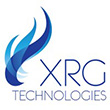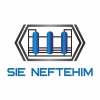-
Gas cleaning for fluid catalytic cracking plants in refineries
GEA Bischoff Customised Gas Cleaning Systems for fluid catalytic cracking (FCC) Units. One of our most important activities in the refinery industry is gas cleaning for FCC units. GEA Bischoff technologies combine engineering process engineering, environmental aspects and energy savings. Taken this into account, GEA Bischoff offers clean air solutions while keeping the CAPEX/ OPEX low. With this extensive portfolio and a long experience of 100 years, we can handle the challenges ...
-
Governments and businesses are increasingly committed to steep decarbonization targets, establishing hydrogen as a key component in the energy transition. As of this writing, McKinsey reports that 64 countries, representing 89% of global CO2 emissions, have made net-zero pledges, while financial institutions and private sector enterprises also continue to increase their decarbonization aspirations. Going forward, the energy mix is projected to shift toward clean electricity, complemented ...
-
Hydrogen fuel conversion in fired equipment
Organizations are facing unprecedented challenges in achieving their strategic climate goals. Now is the time to evaluate options for hydrogen refuelling, efficiency improvements, and novel methods of CO2 reduction in fired heaters and boilers. You can reduce carbon footprints by refuelling fired equipment with hydrogen or ammonia. When planning a refuelling effort there is much more to consider than just the Wobbe Index and combustion performance. The system will experience ...
-
Gas analysis plays an essential role in cleaner industrial operations for plants and refineries, helping to ensure more efficient processes, support the safe removal of pollutants, and monitoring the harmful emissions to the atmosphere. A high-performance continuous emissions monitoring system (CEMS) is crucial to the safety and efficiency of a wide range of industrial processes, and an essential part of clean air strategies. CEMS installations must offer the highest sensitivity ...
-
ISOMALK - moving forward ahead of global trends
Changes in trends in the world and regional markets of motor fuels are sometimes completely unpredictable. A few years ago, it seemed that the development of massive «dieselization» trend, so dominant in the EU, would lead to a drop in demand for gasoline. It seemed that diesel engines solved both the problem of reducing CO2 emissions and increasing efficiency, making the diesel fuels the trade-off solution that would allow the world's motor vehicle to survive quite well ...
-
Will revolutionize turnaround operations and operational excellence by optimizing: productivity, operability, safety health and environment, reliability, product quality, energy efficiency, CO2 SOX NOX VOC emissions, maintenance and repair and operational requirements. An entire Unit can be ITW Online Cleaned in as low as 24 hours on an oil-to-oil basis, including all the equipment and not only the relevant one, without the need of opening it. ITW Online Cleaning a Unit in ...
-
Johnson Matthey licensed processes
A portfolio of advanced process technologies for global markets. Johnson Matthey (JM) develops and licenses proprietary process technologies. We also offer collaborating companies an extensive range of technology development, process design and engineering skill. For over thirty years JM has been engaged in innovative DAVY™ licensing development. Our comprehensive expertise of catalysis and reaction engineering has been tailored to the production of a wide range of chemicals ...
-
Cost-effective SOx reduction solution for full-combustion FCC units. Reducing SOx emissions has become increasingly challenging in many parts of the world. Depending on the location, SOx emission limits are defined at the refinery level as bubble limits; at the individual emissions source; or, in some cases, by the concentrations in the atmosphere in the vicinity. In light of these challenges, many refineries have successfully used SOx additives for reducing overall sulfur ...
-
KOC-15™- Flexible and effective way to lower afterburn in your FCC unit
KOC-15 additive is Albemarle’s most widely used platinum-based combustion promoter, and is commercially proven to provide many refiners with a reliable, low-cost and flexible solution to afterburn and excess carbon monoxide (CO) emissions. In the regenerator, the coke (carbon) on the spent catalyst is burned to form carbon dioxide (CO2). During combustion of carbon to CO2, CO forms as an intermediate. The conversion of carbon to CO in the presence of oxygen occurs rapidly; ...
-
nViro™ Waste Management Solutions
Honeywell UOP's nViro technologies integrate waste management with the design of the process unit, producing opportunities for optimization and process improvements. nViro combines UOP's leadership in refining and petrochemical process technologies with UOP Callidus's experience in waste stream management for powerful solutions to cut costs, reduce emissions and turn waste streams into revenue streams. nViro solutions cover a wide range of processes and wastes, providing practical ...
-
Biodiesel is a first-generation biofuel generated from vegetable oils, including soybeans, rapeseed (canola) and palm. With the ability to reduce lifecycle greenhouse gas (GHG) emissions by as much as 50% compared to fossilbased fuels, biodiesel fits well into the global ambition for clean fuels. Also known as FAME (fatty acid methyl ester), biodiesel is produced by the process of transesterification using biological feedstock, such as food crops, or latter-generation feedstock ...
-
Ethanol is the most mature among major renewable fuels and has the highest global consumption, with the US and Brazil being the top two consumers. Ethanol, when blended into gasoline, oxygenates the fuel and offers a proven solution for reducing transportation-related greenhouse gas (GHG) emissions. It is a clean, cost-effective way to improve the octane of gasoline or motor fuel, helping the engines to run more efficiently. As in the case of some other biofuels like FAME, high ...
-
PAC solutions for sustainable aviation fuel
The aviation industry is determined to develop sustainable solutions to produce cost-competitive, high-yield jet fuel with minimal environmental impact. Countries throughout North America, Europe, and Asia Pacific are currently at different stages in developing guidelines that will mandate the use of sustainable aviation fuel. Today, the global aviation industry produces about 2% of all human-induced CO2 emissions. Transitioning to sustainable aviation fuel could help reduce ...
-
Decarbonizing process heat with industrial heat pumps and steam compressors
Industrial energy consumption accounts for about 25% of energy demand and CO2 emissions worldwide, with process heat being the most common application. Hydrocarbon and basic chemical processing plants are particularly process heat-intensive. Heat demand for basic operations distillation and heating of fluids in US industry is about as energy intense as all other industrial heat applications combined. At the same time, there is a vast, unused potential for waste heat in many plant ...
-
Overcoming roadblocks to decarbonisation
Reducing global CO2 emissions and limiting the increase in global average temperature to 1.5°C is probably the greatest challenge humanity has ever faced. The continuous increase in strength and frequency of natural disasters accompanied with record-high temperatures have drastically accelerated the need to take action to reduce our carbon impact. There is a global consensus between governments, companies, and the public that there is a need to decarbonise our societies and, ...
-
Mission critical electric heat tracing solutions to support the energy transition
Around the globe, clean fuels are helping reduce carbon emissions. And world leaders have pledged to invest in technologies such as carbon capture and hydrogen to help accelerate the clean energy transition. Biofuels, hydrogen, liquefied natural gas and carbon capture technologies are driving the transition to clean fuels and CO2 reduction. This webinar gives you the opportunity to learn how nVent RAYCHEM solutions for the energy transition markets can enable and optimize your ...
-
Enabling energy transitions with the Callidus® Ultra Blue® Burner System
Join this webinar to learn how your renewable energy and net zero operations can dramatically lower nitric oxide (NOx) emissions with the Honeywell Callidus Ultra-Blue Burner system. Fuels are changing in order to meet corporate commitments to carbon reduction and net zero goals. As your operations use more hydrogen and renewable fuels, production of nitric oxide is increasingly scrutinized in both external regulations and internal emissions targets. Attending this webinar ...
-
Economics of Decarbonisation with Honeywell Sustainability Portfolio and IRA
The Inflation Reduction Act (IRA), passed by the US government on August 16, 2022, provides nearly $370B in clean energy and climate funding over the next decade There has never been a better time to invest in a more sustainable future. Our upcoming webinar will provide valuable insights into key IRA provisions and enabling technologies to accelerate industrial decarbonisation and achieve your long-term financial and sustainability goals. This webinar will offer an incredible ...
-
Decarbonization with hydrogen solutions
Demand for hydrogen is expected to increase up to ten-fold by 2050 when multiple industry reports predict 8-24% of the world's final energy demand will be supplied by hydrogen. Hydrogen has a unique ability to address and ˜hard-to-decarbonize' sectors including refining, chemicals, steel, heating, long-haul transport, and long-term power storage and all of which currently produce significant CO2 emissions. To achieve this, hydrogen must be produced with significantly lower carbon ...
-
Towards Your Low-Carbon Refinery
This On-Demand webcast from Shell Catalysts & Technologies, discusses proven technologies for capturing CO2 from both low and high-pressure streams. Are You… - Under pressure to reduce your carbon footprint? - Looking for ways to cost-effectively reduce your CO2 emissions? - Unsure which carbon-reduction solutions will be most appropriate for your facility? Any serious ambitions to reduce a facility’s carbon intensity are likely to be spearheaded ...






























